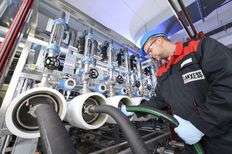- LANXESS doubled membrane capacity at its Bitterfeld plant.
- The market for reverse osmosis membranes is growing at 10% CAGR (2015-2020).
- Production involves a multi-stage process with polysulfone and polyamide layers.
- The new Lewabrane RO ULP line offers higher water permeability and lower operating costs.

Capacity Expansion
LANXESS has doubled its membrane production capacity at the Bitterfeld plant to meet the increasing demand for reverse osmosis membrane elements. This expansion ensures the company can continue to supply major customers effectively.
Market Growth
The market for reverse osmosis membrane elements is projected to grow at an annual rate of 10% (CAGR 2015-2020). The Bitterfeld plant was already nearing its capacity limits, prompting the decision to double its production capabilities.
Production Process
The production of Lewabrane membrane elements involves a multi-stage process. It starts with the creation of a thin-film composite membrane made of several layers, including a polysulfone base layer and an active polyamide filter layer. These membranes are then wound into spiral-shaped elements using fully automated autowinders, facilitating the filtration process.
New Product Line
The new Lewabrane RO ULP line has been introduced, offering higher water permeability and maintaining high rejection levels of critical substances. These "Ultra Low Pressure" elements require 40% less operating pressure, reducing costs and making them suitable for removing micropollutants from wastewater and drinking water.
